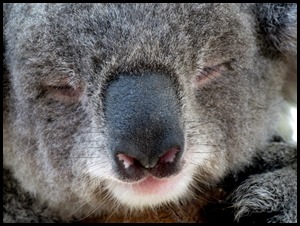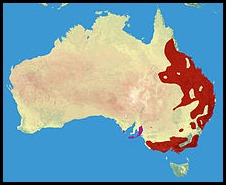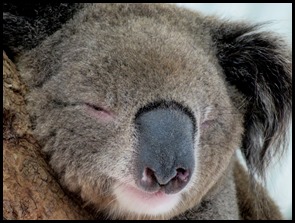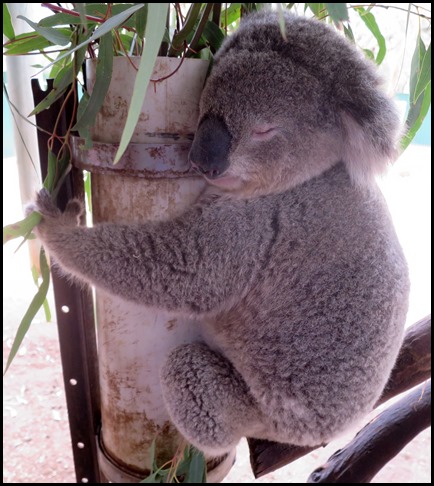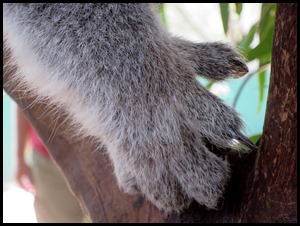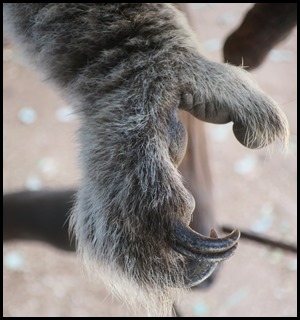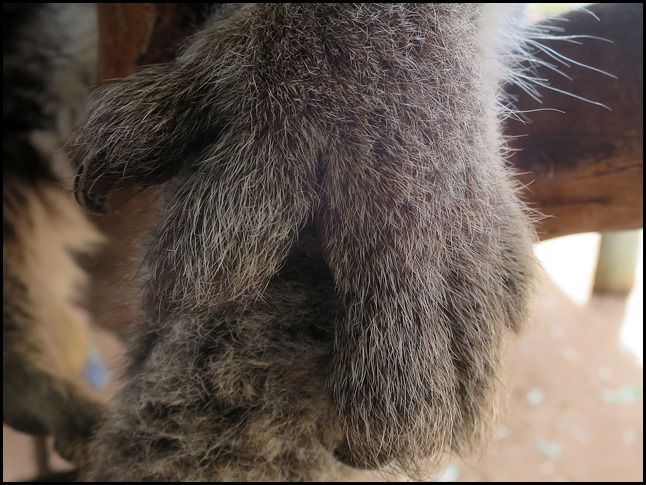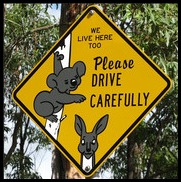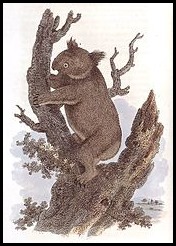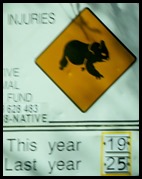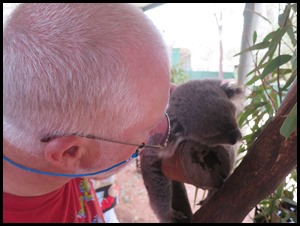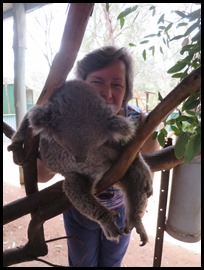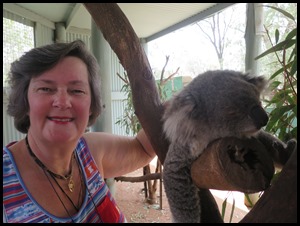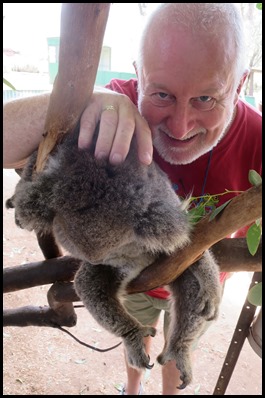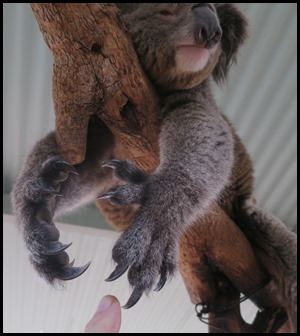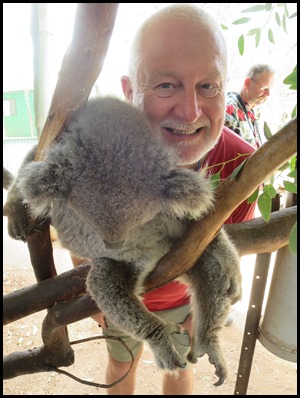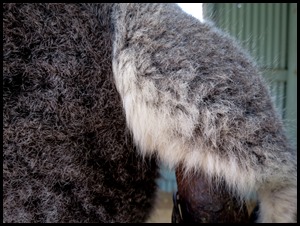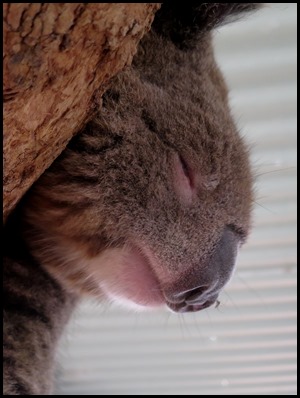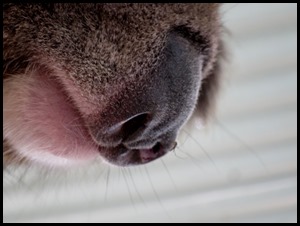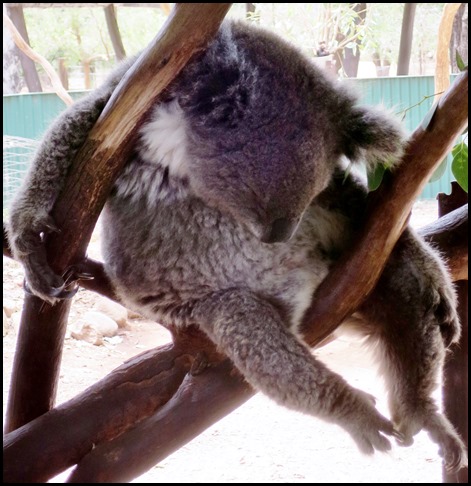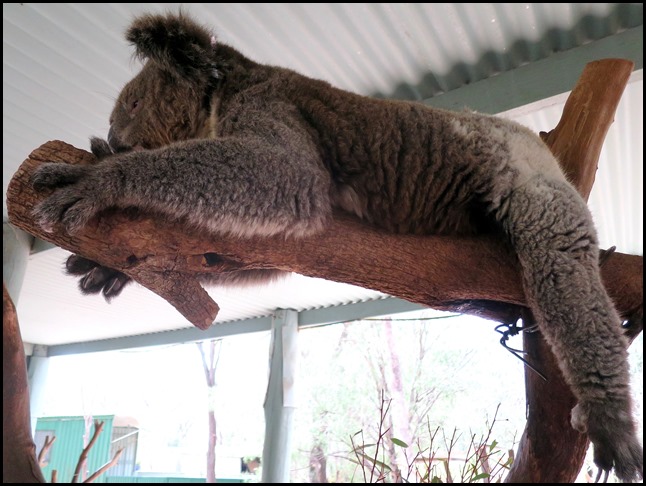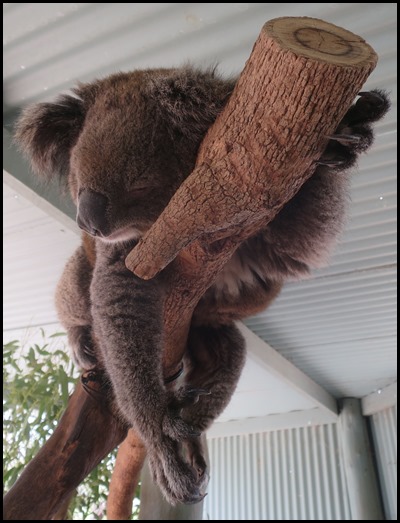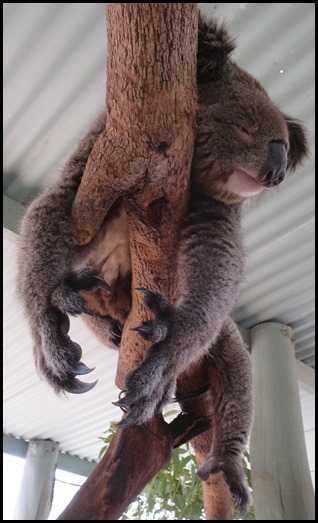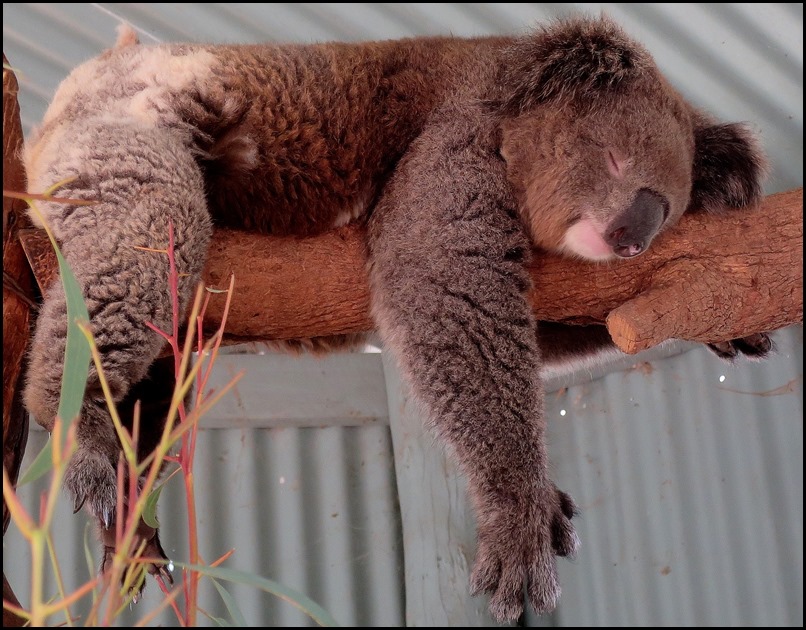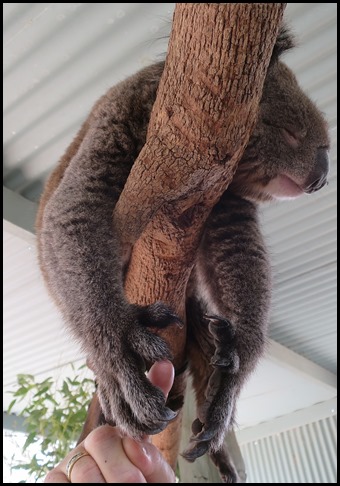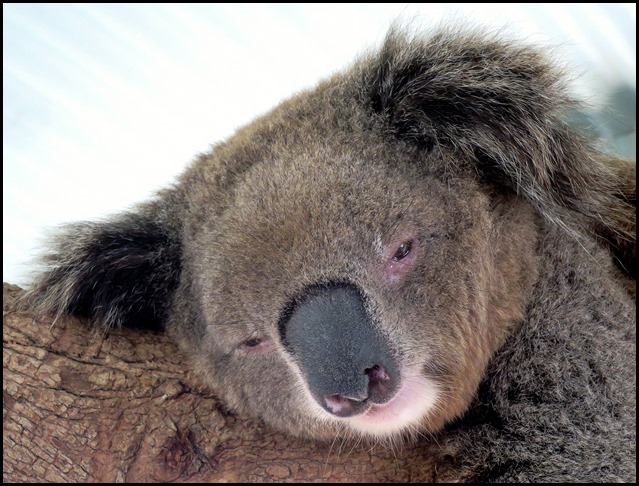Bear Snuggling

|
Koala Bears Are Quite Simply
The Most Awesome Creatures Ever
 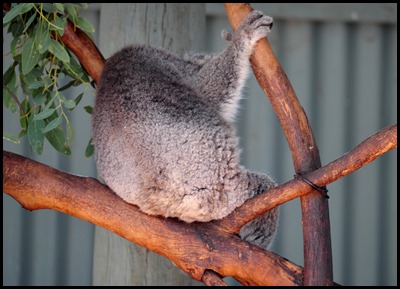 Our very first
bears didn’t flicker a single hair.
After a good look round the Waterways Wildlife Park a
lady found us and took us in to snuggle the bears. The koala (Phascolarctos cinereus or, inaccurately but my favourite
- koala bear) is an arboreal herbivorous marsupial native to Australia. It is the
only extant representative of the family Phascolarctidae, and its
closest living relatives are the wombats. Never mind that, they are the cutest things on the
planet and the fact they sleep for twenty hours and eat for
four what, sign me up
immediately.
The
koala is well known worldwide and is a major draw for Australian zoos and
wildlife parks. It has been featured in advertisements, games, cartoons and soft
toys. It benefited the Australian tourism
industry by over an estimated billion dollars in 1998, a figure that has since
grown. In 1997, half of visitors to Australia,
especially those from Korea, Japan, and Taiwan, sought out zoos and wildlife
parks; about 75 per cent of European and Japanese tourists placed the koala at
the top of their list of animals to see. According to biologist Stephen Jackson:
"If you were to take a straw poll of the animal most closely associated with
Australia, it's a fair bet that the koala would come out marginally in front of
the kangaroo". Factors that contribute to the koala's
enduring popularity include its childlike body proportions and teddy bear-like
face.
The koala is found in coastal areas of the mainland's eastern and southern regions, inhabiting Queensland, New South Wales, Victoria and South Australia. It is easily recognisable by its stout, tailless body; round, fluffy ears; and large, spoon-shaped nose. The koala has a body length of twenty four to thirty three inches and weighs nine to thirty three pounds. Pelage colour ranges from silver grey to chocolate brown. Koalas from the northern populations are typically smaller and lighter in colour than their counterparts further south. It is possible that these populations are separate subspecies, but this is disputed.
Koalas typically inhabit open eucalypt woodlands, and the leaves of these trees make up most of their diet. Because this eucalypt diet has limited nutritional and caloric content, koalas are largely sedentary and sleep for up to twenty hours a day. They are asocial animals, and bonding exists only between mothers and dependent offspring. Adult males communicate with loud bellows that intimidate rivals and attract mates. Males mark their presence with secretions from scent glands located on their chests. Being marsupials, koalas give birth to underdeveloped young that crawl into their mothers' pouches, where they stay for the first six to seven months of their life. These young koalas are known as joeys, and are fully weaned at around a year. Koalas have few natural predators and parasites but are threatened by various pathogens, like Chlamydiaceae bacteria and the koala retrovirus, as well as by bushfires and droughts. The koala retrovirus (KoRV) may cause Koala Immune Deficiency Syndrome (KIDS), which is similar to AIDS in humans. Prevalence of KoRV in koala populations suggests a trend spreading from the north to the south of Australia. Northern populations are completely infected, while some southern populations (including Kangaroo Island) are free.
Up close and personal with their hands.
Our first road sign was a happy one. George Perry illustration 1810. John Gould illustration 1863. On the way out of Nelson’s Bay we saw the road sign recording deaths so far this year - 19 and last year – 25. Koalas were hunted by indigenous Australians and depicted in myths and cave art for millennia. The first recorded encounter between a European and a koala was in 1798, and an image of the animal was published in 1810 by naturalist George Perry. Botanist Robert Brown wrote the first detailed scientific description of the koala in 1814, although his work remained unpublished for 180 years. Popular artist John Gould illustrated and described the koala, introducing the species to the general British public. Further details about the animal's biology were revealed in the 19th century by several English scientists. Because of its distinctive appearance, the koala is recognised worldwide as a symbol of Australia. Koalas are listed as of Least Concern by the International Union for Conservation of Nature. The Australian government lists populations in Queensland and New South Wales as Vulnerable. The animal was hunted heavily in the early 20th century for its fur, and large-scale cullings in Queensland resulted in a public outcry that initiated a movement to protect the species. Sanctuaries were established, and translocation efforts moved to new regions koalas whose habitat had become fragmented or reduced. The biggest threat to their existence is habitat destruction caused by agriculture and urbanisation.
We snuggled each of the chaps. If you can imagine burying your fingers into a thick sheepskin mat and double the density of the fur, that’s what we were feeling. Very difficult to wiggle through the fur to find flesh and with such a thick coat they are quite well insulated against the heat of the day. Bear was fascinated with their toes and double-clawed thumbs, very powerful and sharp.
Their ears and nose enthralled me. I was very sad to see a mosquito gnawing on one chap. You can see it in the middle picture and after I shooed it away it came back to the very same spot, eventually my little friend woke and batted it away. We left the enclosure having had an incredible experience and leave with just the cutest pictures.
ALL IN ALL AAAAAAAAAAARRRRRRRRRrrrrrrrrrrrrrrrrrrrrrr JUST THE MOST APPEALING ANIMALS WE HAVE EVER MET |
